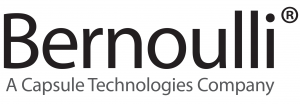
ECRI report provides a roadmap for improved patient safety
by Sam Larson, Vice President Marketing
The ECRI Institute, an independent authority on the medical practice and product safety, recently published its Top 10 Patient Safety Concerns for 2019. All the items in the report are important, but items 6, 8 and 10 merit additional scrutiny. They include, respectively:
- Detecting Changes in a Patient’s Condition
- Early Recognition of Sepsis across the Continuum
- Standardizing Safety Efforts across Large Health Systems
I focus on these issues because they share a unifying theme—the need to proactively safeguard patients across multiple units and clinical disciplines. The also share a unifying solution: Continuous clinical surveillance.
The capability to uncover and act upon insights filtered from continuous streams of real-time patient data from multiple sources is by itself a powerful solution, but also a robust augmentation to Early Warning Scores and other patient safety tools.
Detecting Changes in a Patient’s Condition
In many cases the focus of patient safety rests mostly on rescue, rather than early intervention and prevention. This leaves health systems vulnerable to increased regulatory oversight that ties reimbursement to key patient safety indicators and performance measures.
Early detection of patient deterioration saves lives. Key advancements in real-time healthcare and advanced data analysis are the primary drivers behind continuous clinical surveillance and present a significant opportunity for health systems to push patient safety initiatives into the realm of proactive healthcare.
A recent KLAS report, Clinical Surveillance 2018, indicates that “clinical surveillance tools hold the promise of giving caregivers clinically actionable insights that decrease mortality, reduce readmissions, and improve overall patient outcomes, and clinicians expect these alerts to be embedded directly within their workflow.”
Preventing adverse events before they happen not only optimizes patient outcomes, but eliminates the costly side effects of reactive patient safety, including emergency transfers or escalations in care, increased resource utilization, extended length of stay and hospital readmissions.
Early Recognition of Sepsis across the Continuum
The Agency for Healthcare Research and Quality cites sepsis as the most expensive illness treated in hospitals—more than $24 billion annually. Sepsis often requires prolonged, expensive hospital stays in intensive care units, and is a leading cause of frequent, unplanned readmissions.
Many hospitals have deployed Early Warning Scoring Systems (EWSS) to help clinicians identify patients at risk for sepsis. While use-cases indicate that EWSS provides reasonable predictions, information gaps remain a critical shortcoming.
Fortunately, the utilization of continuous, real-time data is a potent tool in the fight against this infection and a powerful complement to EWSS initiatives. Leveraging aggregated, protocol-driven measures for septicemia detection and stored data from the EHR, a multivariate rules-based, advanced analytics engine can identify a potential deteriorating condition and notify the clinical team.
Standardizing Safety Efforts across Large Health Systems
Making healthcare more of a team sport requires that hospitals identify and support internal champions in all relevant departments. However, breaking down personnel, technology and data silos is a heavy lift for even the most innovative health systems. Tight budgets, unsuccessful technology implementations and reluctance to embrace even necessary change can be an overwhelming temptation to embrace the status quo.
Hospitals each have their own unique characteristics, culture and needs. Identifying and documenting those attributes are critical to patient safety standardization.
The first step in patient safety standardization is an assessment of needs and potential impact to workflow. The formidable task list that comes with enterprise-wide reforms requires the input and expertise leadership from multiple stakeholders, including IT networking, facilities, patient safety experts, educators, informatics nurses, laboratory staff, pharmacists, electrical engineers, biomedical engineers, quality improvement specialists, vendors and direct-care clinical staff.
Vendor partnerships also are essential. Health IT implementations can be expensive, complex, involve as dozens of stakeholders, and are often up against aggressive deadlines. The quality of the relationship with the vendor supplying the solution can make a huge difference.
A consultative partner with deep knowledge of the unique aspects of your organization not only will help you avoid common mistakes, but also keep you focused on detailed integration points and workflows.
Concluding Thoughts
Continuous clinical surveillance offers hospitals the opportunity for immediate and predictable patient safety improvements that can be scaled and amplified across the enterprise.
As Bernoulli Health CEO Janet Dillione noted in last week’s blog post: “It’s exciting to see the healthcare industry recognize that continuous clinical surveillance can deliver better, more consistent, more efficient and safer patient care.”
Bernoulli commends ECRI in its continuing efforts to highlight areas of patient safety concern. The awareness that patients could be harmed while receiving care has been around for thousands of years, since Hippocrates coined the phrase “first, do no harm.” It is imperative that all healthcare stakeholders – including providers, technology vendors, regulators, safety advocates, patients and their families – work together toward the goal of eliminating preventable patient harm.
About the Author:

Sam Larson
Vice President Marketing
Sam joined Bernoulli in May of 2015. For the 10 years prior he was with Draeger, an international leader in the fields of medical and safety technology, where he was Global Director of Care Area Management and Strategic Marketing for Intensive Care based at the Draeger headquarters in Luebeck, Germany, and most recently Vice President of Marketing for the Hospital Division in North America. Over his career he has also held various Marketing and Business Development leadership roles with Spacelabs Medical, Nidek, Medical Data Electronics and Sonosite. Mr. Larson has a BA degree in Communications from the University of Washington and has completed executive education and leadership development programs with IESE Business School (Spain) and Babson College. View Sam’s profile on Linkedin.


